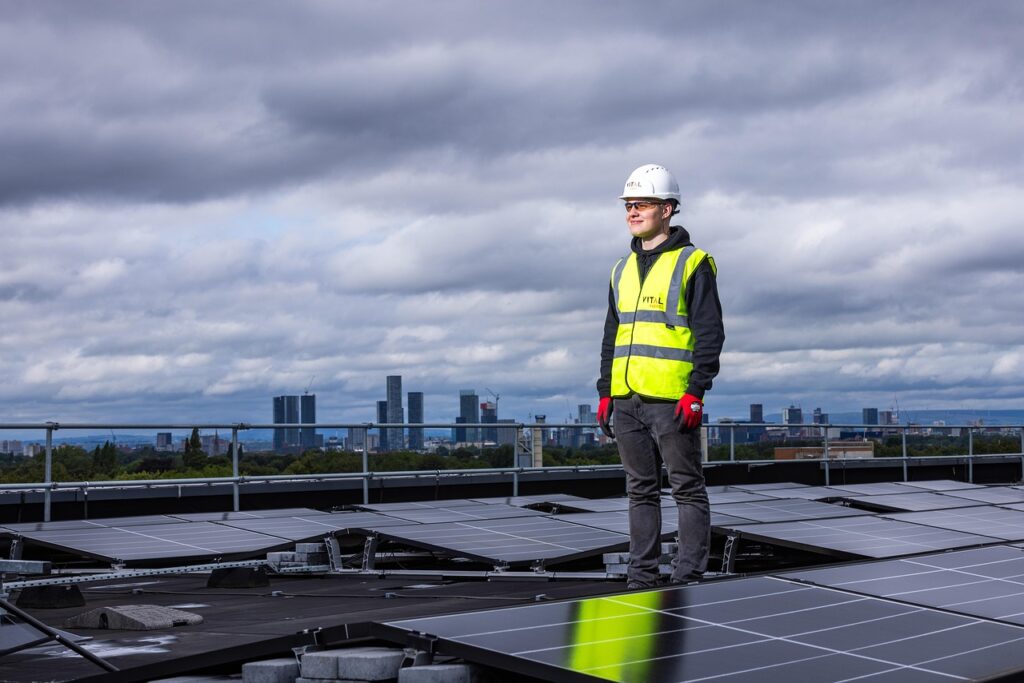Solar panel siding combines traditional home siding with integrated solar technology, allowing buildings to generate electricity while maintaining a clean, modern exterior. It serves as both an energy source and a protective outer layer, making it a practical alternative to conventional solar panels and siding installed separately.
This technology appeals to homeowners seeking to improve energy efficiency without compromising aesthetics. The panels are designed to blend seamlessly with existing structures, providing a streamlined appearance and reducing installation complexity compared to rooftop systems.
As energy costs rise and sustainability becomes a priority, solar panel siding offers a dual benefit—protecting the home and cutting electricity bills. Understanding how it works, its benefits, and potential limitations can help homeowners decide if this innovation fits their energy goals.
Understanding Solar Panel Siding
Solar panel siding integrates energy generation directly into a building’s exterior. It involves specific materials and technologies designed to capture sunlight while serving as protective cladding. This section breaks down how it works, materials used, and its key advantages.
How Solar Panel Siding Works
Solar panel siding operates by embedding photovoltaic (PV) cells into siding materials. These cells convert sunlight into electricity through the photovoltaic effect, generating direct current (DC).
The DC electricity then flows through an inverter, which converts it to alternating current (AC) for home or grid use. The siding often features integrated wiring to connect cells seamlessly.
Proper installation requires optimizing the angle and exposure to sunlight. Unlike traditional panels, solar siding is part of the wall structure, reducing the need for separate mounting hardware.
Types of Solar Siding Materials
Common materials include:
- Thin-film photovoltaics: Flexible, lightweight layers applied directly to siding panels.
- Building-integrated photovoltaics (BIPV): Solar cells incorporated into standard siding materials like metal, vinyl, fiber cement, or composite panels.
- Silicon-based solar siding: More efficient rigid panels with PV cells laminated onto siding surfaces.
Metal and fiber cement tend to offer greater durability. Vinyl options are popular for cost-effectiveness but typically have lower efficiency.
Key Benefits of Solar Siding
Solar siding combines electricity generation with building protection, saving space and preserving aesthetics. It reduces the need for separate solar panel arrays, maintaining clean exterior lines.
It can lower energy bills by supplying renewable energy directly to the home, increasing energy independence. Solar siding also potentially increases property value due to its dual-function nature.
Because it replaces traditional siding, installation often streamlines renovation or new construction. It provides durable weather resistance, protecting the building while generating power.
Installation and Considerations
Proper installation is critical for solar panel siding to function efficiently and maintain durability. Key factors include the installation steps, design adaptability, and ongoing maintenance to preserve performance.
Installation Process Overview
Solar panel siding requires a thorough assessment of the building’s structure first. Installers remove existing siding and ensure the wall surface is clean, level, and weatherproof before attaching mounting brackets.
Panels are connected to the building’s electrical system and aligned to maximize sun exposure, typically on south-facing walls. Integration with the home’s inverter and wiring demands certified electricians to meet local codes and safety standards.
Installation time varies, but a typical residential project takes 3 to 7 days. Proper sealing and waterproofing are essential to prevent leaks and damage during weather events.
Design and Aesthetic Options
Solar panel siding comes in various colors and textures to mimic traditional materials like wood, brick, or metal panels. Some manufacturers offer customizable shapes and sizes for better architectural integration.
Panels can be arranged in full or partial coverage depending on energy needs and visual preferences. Low-profile designs reduce visibility while maintaining output efficiency.
Homeowners should consider how the siding’s appearance complements their property and neighborhood style to avoid conflicts with homeowners associations or local regulations.
Maintenance Requirements
Routine cleaning is necessary to keep panels clear of dirt, debris, and snow, which can reduce energy production. A soft brush or hose is usually sufficient; harsh chemicals or pressure washers are not recommended.
Inspecting the siding annually for cracks, loose mounts, or electrical issues helps prevent larger problems. Technicians may perform system checks to verify inverter function and panel output.
Proper drainage and gutter maintenance are also important to avoid water buildup behind siding, which could cause mold or structural damage over time.
